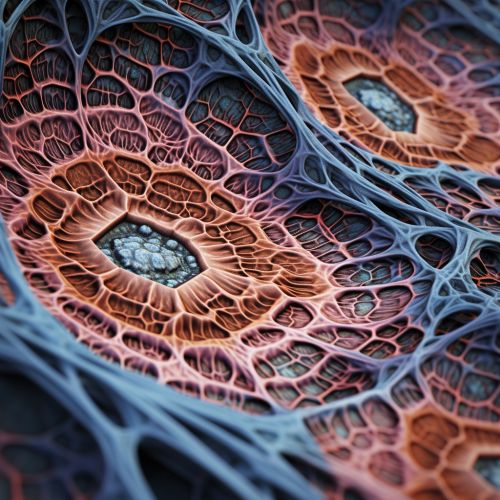Retinoschisis
Overview
Retinoschisis is a rare, genetic eye condition characterized by the splitting of the retina, the light-sensitive layer of cells at the back of the eye. This condition can lead to severe vision loss and is often diagnosed in childhood. Retinoschisis can be categorized into two main types: juvenile X-linked retinoschisis (XLRS) and senile retinoschisis. The former is the most common form and is usually diagnosed in young males, while the latter typically affects older adults.
Etiology
Mutations in the RS1 gene are the primary cause of juvenile X-linked retinoschisis. This gene provides instructions for producing the retinoschisin protein, which plays a crucial role in maintaining the structure and health of the retina. Mutations in the RS1 gene disrupt the normal function of retinoschisin, leading to the splitting of the retina's layers.
Senile retinoschisis, on the other hand, is not well understood. It is believed to be caused by the natural aging process and changes in the vitreous, the clear gel that fills the space between the lens and the retina.
Pathophysiology
The pathophysiology of retinoschisis involves the splitting of the retina into two layers. In juvenile X-linked retinoschisis, this occurs in the macula, the part of the retina responsible for sharp, central vision. The splitting of the macula's layers leads to the formation of cyst-like spaces, which can cause a decrease in visual acuity.
In senile retinoschisis, the splitting occurs in the peripheral retina. This can lead to the formation of a bullous retinoschisis, a large, blister-like elevation of the retina. If left untreated, this can lead to retinal detachment, a serious condition that can cause permanent vision loss.


Clinical Manifestations
The symptoms of retinoschisis can vary greatly, depending on the type and severity of the condition. In juvenile X-linked retinoschisis, symptoms often appear in early childhood and may include difficulty reading, crossed eyes, and a decrease in visual acuity. In severe cases, individuals may experience complete vision loss.
Symptoms of senile retinoschisis are often less noticeable, as the condition typically affects the peripheral vision. Individuals may experience a gradual loss of peripheral vision, floaters, or flashes of light. In some cases, senile retinoschisis may not cause any noticeable symptoms.
Diagnosis
Diagnosis of retinoschisis typically involves a comprehensive eye examination, including a dilated eye exam and visual acuity test. Additional diagnostic tests may include optical coherence tomography (OCT), which provides a detailed image of the retina, and electroretinography (ERG), which measures the electrical responses of various cell types in the retina.
Genetic testing can also be used to confirm a diagnosis of juvenile X-linked retinoschisis. This involves analyzing a sample of the individual's blood to identify mutations in the RS1 gene.
Treatment
There is currently no cure for retinoschisis, and treatment is focused on managing symptoms and preventing complications. This may involve regular monitoring of the condition, and in some cases, surgical intervention.
In cases of juvenile X-linked retinoschisis where there is a risk of retinal detachment or significant vision loss, a procedure known as vitrectomy may be performed. This involves removing the vitreous gel from the eye to prevent it from pulling on the retina.
For senile retinoschisis, treatment is typically only required if complications arise, such as retinal detachment. In these cases, laser photocoagulation or cryotherapy may be used to seal the retinal tear and reattach the retina.
Prognosis
The prognosis for individuals with retinoschisis varies greatly, depending on the type and severity of the condition. With regular monitoring and appropriate treatment, most individuals with retinoschisis can maintain a good quality of life. However, in severe cases, the condition can lead to significant vision loss.
